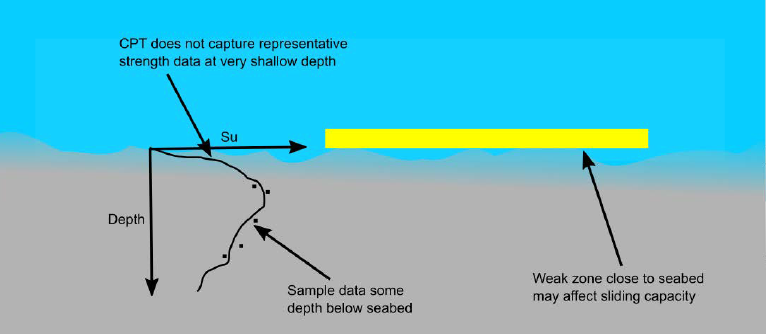2.1.1 The SUT Guidance notes for the planning and execution of geophysical and
geotechnical ground investigations for offshore renewable energy
developments set out general requirements for geotechnical site
investigation for the various foundation types typically used within offshore wind
developments. In general, the geotechnical investigations should provide all of the
necessary information for design and installation of the foundations and it is
expected that this data is integrated with the geophysical data and ground model
such that a complete understanding of seabed and soil conditions is available within
the design process.
2.1.2 In the selection of design parameters it should be considered what the
techniques used have not resolved or measured. For example, due to a typically high
variation in strength profile of clays at seabed, a cone penetration test (CPT) at
seabed may not provide sufficient information for the sliding capacity of a mudmat
foundation without skirts. Figure 3.2.1 Variation of undrained shear strength below seabed shows an example where the collected CPT and sample data
would not provide an accurate definition of design parameters for sliding capacity
at the seabed. As such, engineering judgement is an essential component of
interpreting site investigation data to derive profiles of design parameters. The
definition of design parameters should also take appropriate account of what they
are being used for; for example, to determine the axial capacity of a pile a
characteristic lower bound or best estimate strength may be preferable, whereas for
driveability assessment a characteristic upper bound strength may be preferred.

Figure 3.2.1 Variation of undrained shear strength below seabed